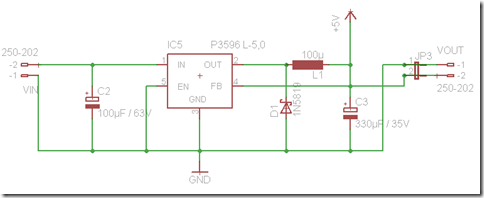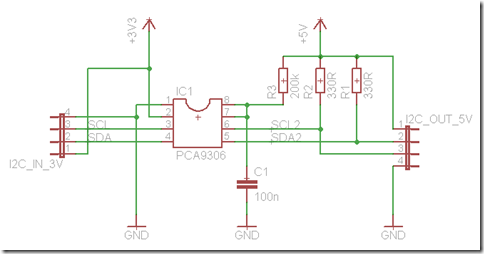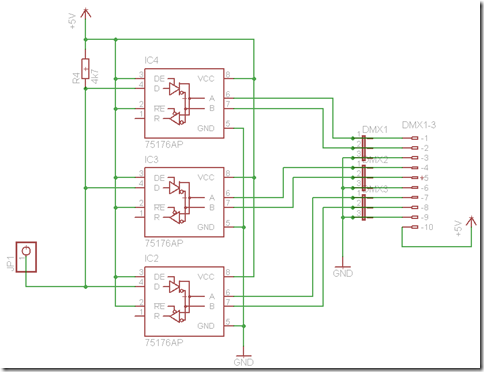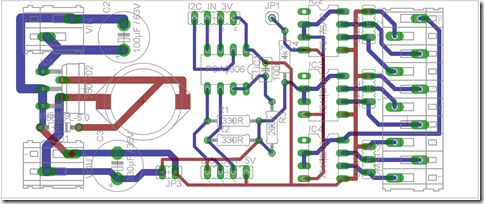The first board for my home automation project needs to provide everybody with Power (5V DC). This is the main purpose of this board and because this is a very basic requirement it’s the first to be described here.
But this board handles two more jobs:
- create 5V DC from input voltage of 12V DC
- convert a 3,3V I2C bus to an I2C bus capable of speaking with 5V components
- driver for the DMX signals
Power
Here’s nothing special. Just a P3596L-5.0 step-down DC/DC converter, two capacitors, an inductor and a diode.
I2C
The microcontroller I’m using only has 3,3V output pins even if they are 5V tolerant you cannot connect 5V I2C components. But the rest of my setup is build with 5V components so I have so power up the I2C-Bus accordingly.
Luckily there is a chip that does the exact same thing: the PCA9306 a dual bidirectional I2C bus voltage-level translator.
It just needs a 3,3V (I get this directly from the microcontroller board) and 5V current and the input I2C bus. No big deal at all.
DMX
DMX is a protocol used on stages for controlling lights. I use the same for dimming my LEDs in the whole apartment. Today I will not go in much details about the protocol or the software side.
On the wire DMX is just a symmetric RS-485 signal on three wires (called + / – / GND).
I use a simple SN75176 differential bus transceiver chip but since DMX is only sending in one direction there is no need in using the receiving side of the chip. The control ports are hard wired for sending and it gets its signal from an UART of my microcontroller.
On my board I put three of the same chips to create three physical separated busses with the same signal.
Again, here is less magic involved:
The Board
From left to right: Power / I2C / DMX
What is this all about
If you find this post interesting, have a look at the other posts in my homeautomation category within this blog. Especially the first and the second post describe what this is all about.
The schematics and boards (created with EAGLE) and all source code is or will be available on github: https://github.com/irgendwienet/homeautomation




Recent Comments